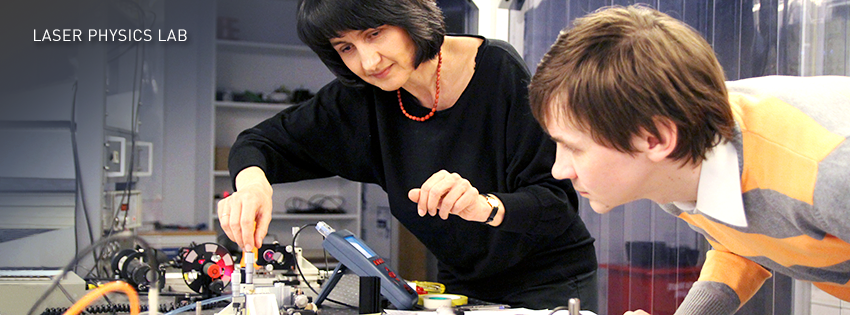Laser Physics - Department of Physics
Laser Physics Laboratory
Laser Physics Laboratory
photo01_Laser Physics Lab_Irina

Laser Physics Laboratory
We has advanced instruments in the NTNU Laser Lab. Research here is done both on solid state laser based on crystals and fiber laser.
There are three parameters in laser technology that influence results:
- The wavelength
- The power applied
- The pulse duration
There are two different types of lasers: constant or pulsed. Shorter pulses give a wider spectrum (wavelength) and therefore more areas of use. Nanosecond pulses (10-9 of a second) can be used for marking, for instance patterns on your smart phone. When using femtosecond pulses (10-15 of a second) most material change form from solid to gas. In their research, Irina and Nikolai work on creating the shortest pulse possible.
Fiber laser vs. crystal laser
The advantage with fiber laser is that it is more sensitive and therefore gives more reliable results than crystal based laser. It can also be made more compact and more durable and used for more practical applications. Crystal based laser is a strong challenger in its flexible construction and a generally wider spectrum of operation. NTNU has sophisticated equipment and experience that is used to create lasers with different properties, pulses, wavelength and colours etc.
The laser physics laboratory
It is important that all the components are exactly placed at the right location. The lab tables has a honey comb structure that reduces vibrations and makes it stable. Optomechanical translators are used to help the optical components to align and position the laser beam correctly.
Oscilloscope instruments are used to visualize the duration of the laser pulse. In clean air, you cannot see the trace of the laser beam, even though it is considered a visible beam. Diagnostical instrument used to measure the pulse length in time units.
Mirrors and beam spiltters are used. The mirrors direct the laser beam to the desired location while the splitters divide the beam into two parts allowing many different types of experiments.
Electric current creates the laser light inside laser diodes. The light will be coupled (connected) into the fiber to transport it to a desired location. Optical fiber in protective coating transports the laser beam. The lab has instruments for precise cutting and splicing of fibers. Fiber that contains infrared light shines with a blue colour in the dark. This process is called fluorescence. Fluorescence is usually undesired in laser as it wastes energy and unnecessarily emits light.

